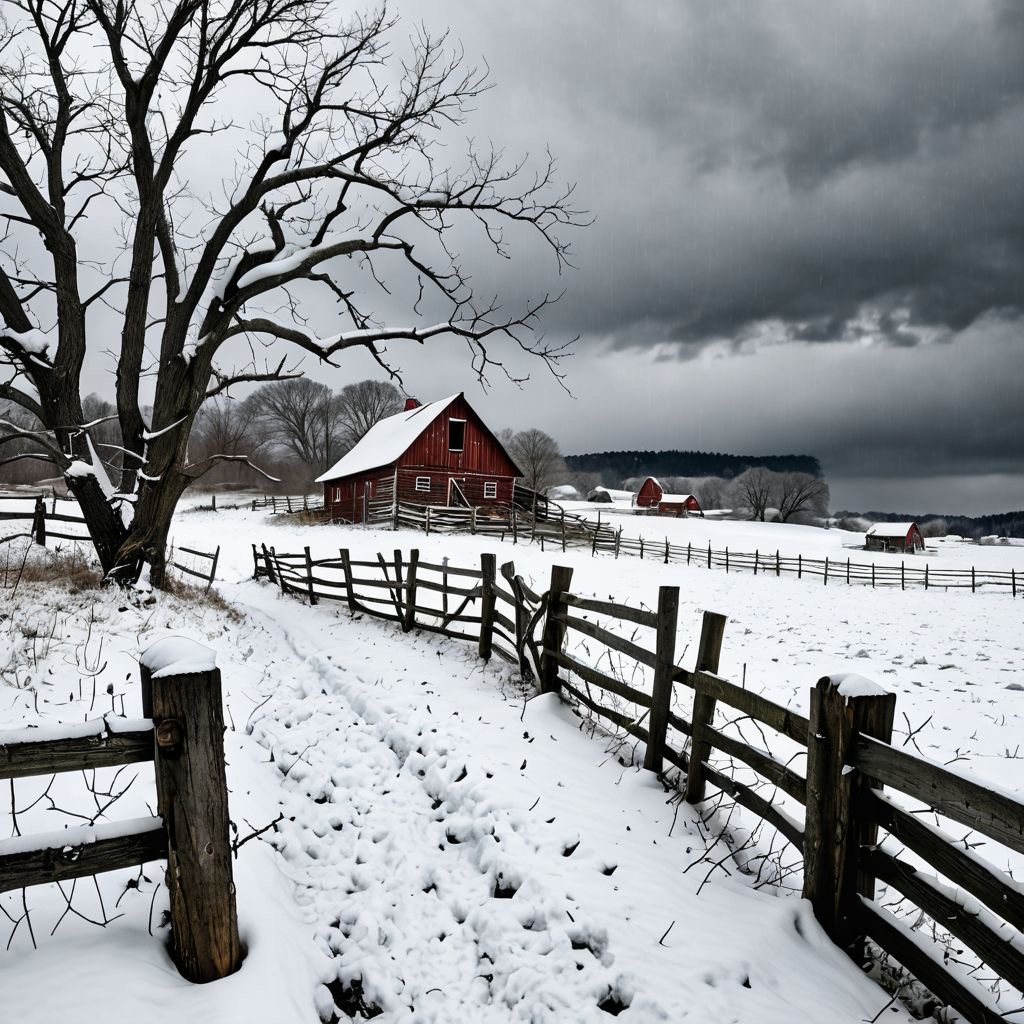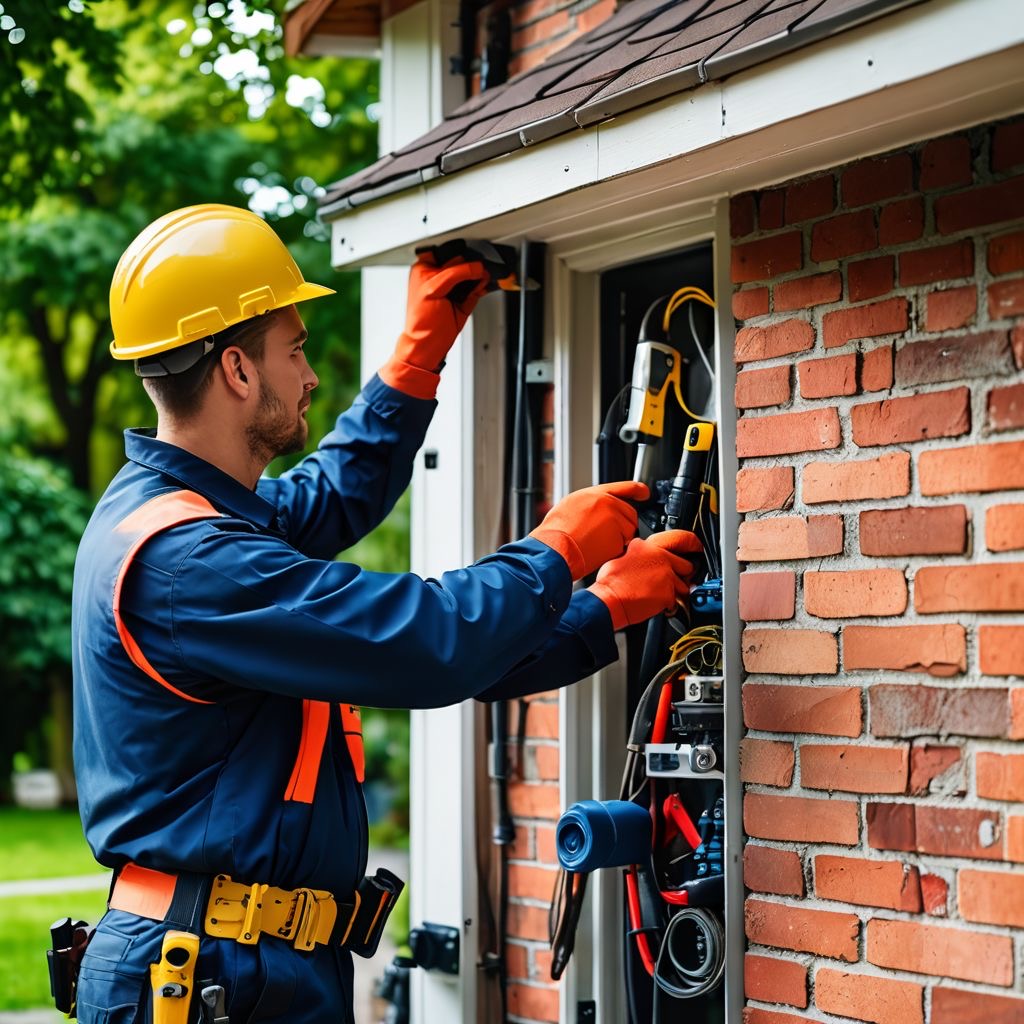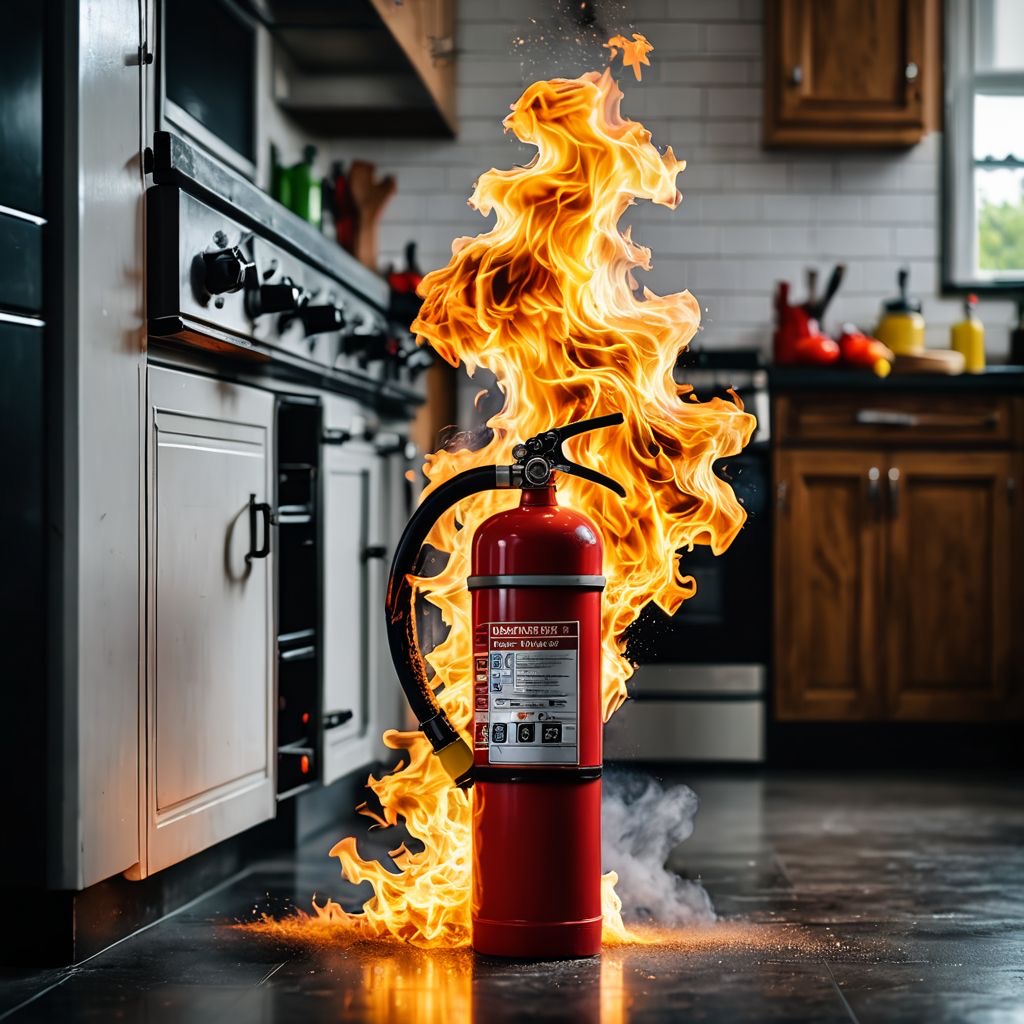
Table of Contents
1. Introduction
2. Understanding Home Insurance Basics - Types of Coverage
- The Importance of Understanding Policy Limits
- Understanding Deductibles
3. Common Insurance Claims
- Damage from Natural Disasters
- Theft and Vandalism
- Liability Claims
- Fire and Smoke Damage
4. Understanding Lawsuits for Homeowners
- Neighbour Disputes
- Slip and Fall Injuries and Claims and How they Relate to Snow Shovelling, Snow Plowing & Snow Removal
5. Choosing a Reputable Insurer
6. Mitigating Risks as Property Owners
- Winnipeg Home and Yard Maintenance Tips
- Safety Precautions
- Regular Insurance Policy Reviews
7. When to Consult a Professional
8. Conclusion
Introduction:
As proud homeowners in Winnipeg and across Canada, navigating the complexities of property ownership can be both fulfilling and daunting. The responsibility of maintaining your home and yard encompasses various aspects, including the vital need for adequate insurance coverage. In Canada, homeowners file approximately 1.5 million insurance claims annually, underscoring how common they are and the importance of understanding home insurance policies and what they cover.
This blog will delve into the most common insurance claims and lawsuits faced by property owners, providing valuable insights into how to protect yourself and your assets. Understanding your insurance coverage is crucial not only for filing claims but also for avoiding potential lawsuits that can arise from homeownership. Property managers, a secondary target audience, will also benefit from this discussion, as they encounter similar challenges in managing commercial properties.
The dialogue surrounding property insurance becomes even more relevant considering the unique Winnipeg-style climate we experience here in our part of Manitoba, where extreme weather can significantly affect both residential and commercial buildings. The latest reports, including those from the Insurance Bureau of Canada (IBC), indicate that severe weather events (which now account for 70% of all major insurance claims) have resulted in a dramatic increase in the number of homeowners seeking insurance payouts due to property damage.
This essay will explore fundamental aspects of home insurance, common claims, and lawsuits homeowners may encounter, along with practical tips for mitigating risks. Additionally, we will examine the differences between various types of coverage—specifically property versus liability coverage—and explain how deductibles work and how they typically affect insurance premiums.
By the end of this essay, homeowners and property managers alike will be equipped with the knowledge to better understand their insurance policy, effectively manage risks, and know when to seek legal counsel. Whether you are a long-time homeowner or a new property manager, this comprehensive exploration will shed light on essential insurance considerations that can safeguard your assets and your future.
Important - Please Note: Every situation is different, and outcomes in matters related to insurance claims and lawsuits are variable. Readers are encouraged to investigate their own situations and risks and should consult insurance and legal professionals for personalized advice.
Contact us today for your free estimate.
Understanding Home Insurance Basics:
Types of Coverage
In Canada, standard homeowner insurance policies typically provide three main types of coverage: property coverage, liability coverage, and additional living expenses.
1. Property Coverage: This coverage encompasses the physical structure of your home and its contents against a variety of risks, including fire, theft, and vandalism. This type of coverage is vital for homeowners, as it ensures that you can recover financially from damages to your property. Given the fluctuating real estate market, property owners should routinely assess the value of their home and make necessary adjustments to their coverage limits to reflect any renovations or improvements.
According to the Insurance Bureau of Canada, over 60% of homeowners do not have sufficient coverage to fully protect their homes, leading to potential financial difficulty in the event of a significant loss. Adequate property coverage includes all structural elements of your home, such as walls, roof, floors, and any attached fixtures, alongside personal belongings like furniture, electronics, and clothing.
2. Liability Coverage: This protection is crucial for homeowners against claims that arise from injuries or damages incurred by another party on their property. For instance, if a guest slips and falls due to negligence—like not clearing ice from a walkway—liability coverage can help cover legal fees and any settlements ordered by a court.
Homeowners need to maintain a comprehensive liability policy to protect themselves from financial ruin in the event of an accident. The average liability claim in Canada amounts to approximately $30,000 to $45,000. Increased liability coverage is often recommended for homeowners with pools or other amenities that come with added risk.
3. Additional Living Expenses: If your home becomes uninhabitable due to an insured disaster, this coverage will help pay for temporary living arrangements, such as hotel stays, while repairs are being conducted. This coverage can be a lifesaver during unexpected events, allowing homeowners to maintain a semblance of normalcy while their property is being restored.
The Importance of Understanding Policy Limits:
Every type of coverage comes with a set limit, which represents the maximum amount that the insurance company will pay in the event of a claim. For example, if your property coverage limit is $300,000 and the damages amount to $400,000, you will be responsible for paying the remaining $100,000 out of pocket unless additional coverage is in place.
Understanding your policy limits is crucial to avoid unexpected financial burdens. Homeowners should schedule regular evaluations of their coverage limits, especially after significant life events or changes in property value. Standard practices include:
- Assessing Your Property’s Value: Property values can change due to renovations or market fluctuations. Homeowners should consider conducting a home appraisal every few years or after substantial changes to ensure their coverage is adequate.
A Canadian mortgage study found that home values have risen by over 30% in some regions over the last decade. If your home’s market value increases significantly and you fail to adjust your insurance coverage accordingly, you may find yourself underinsured in the event of a loss.
- Reviewing Policy Terms: Many policies contain varying limits for different types of coverage. For example, while your structure may be insured up to a certain limit, the contents within your home may only be covered for a percentage of that amount. Understanding these differences and ensuring proper coverage amounts for each category is essential.
This approach allows for a more comprehensive understanding of what you can reasonably expect in terms of recovery after a loss, thereby mitigating the financial risks associated with under-insurance.
Understanding Deductibles:
A deductible is a key component of any homeowner insurance policy and represents the amount you are required to pay out of pocket before your insurance coverage begins to apply during a claim. For example, if you have a deductible of $1,000 and you incur $5,000 in damages, your insurance provider will cover only $4,000 after you pay your deductible.
How Deductibles Affect Premiums:
- Higher Deductibles Mean Lower Premiums: Typically, selecting a higher deductible will lead to lower monthly premiums, as you are assuming more of the risk. This can be beneficial for homeowners who are financially secure and can handle out-of-pocket expenses in the event of a claim.
- Lower Deductibles Mean Higher Premiums: Conversely, a lower deductible results in higher premiums since the insurer is assuming more of the risk. This option may be better for homeowners with tighter budgets, allowing them to have more manageable out-of-pocket costs when making claims.
According to studies by the Canadian Insurance Brokers Association, homeowners can save anywhere from 10% to 30% on their premiums by opting for a higher deductible, although this depends on the insurer and the specific terms of the policy.
When determining an appropriate deductible, homeowners should assess their financial resilience. If you can afford to handle larger expenses, choosing a higher deductible may save money on premiums in the long run. However, if you prefer to have lower upfront costs when making claims, a lower deductible could be the better choice. Furthermore, it is critical to ensure that the deductible amount fits comfortably within your budget to avoid financial strain in the event of a claim.
Common Insurance Claims:
Damage from Natural Disasters

Natural disasters—including storms, hail, floods, and winter conditions—represent some of the most frequent reasons for insurance claims in Canada. According to the Insurance Bureau of Canada, these disasters now account for more than 70% of major insurance claims.

Severe weather events have become increasingly prevalent, and Manitoba is no stranger to extreme conditions. Homeowners should be fully aware of how insurance policies classify various disaster scenarios, as this understanding can impact what is covered in the event of a natural disaster.
In Manitoba, heavy winter storms often lead to significant damage from snow accumulation, ice, and freezing temperatures. In fact, the Manitoba Agricultural Services Corporation reported that the province experienced a 600% increase in winter-related claims over the past five years.

Additionally, it’s worth noting that many homeowners are unaware of exclusions in their plans; for example, while standard policies cover damage from wind or hail, they may not cover flooding unless specifically included in a separate policy or endorsement. Homeowners should review their policies carefully and consider acquiring additional coverage for floods, as this is crucial for regions prone to heavy rainfall or snowmelt.
Theft and Vandalism:

Theft and vandalism are significant concerns for homeowners, particularly in urban settings. In 2021, Statistics Canada reported that property crimes accounted for approximately 70% of all reported criminal offenses, with theft over $5,000 being a prevalent concern for residential properties.
This includes theft of personal belongings as well as intentional damage to property, such as broken windows or graffiti. Statistics indicate that approximately 10% of all property insurance claims relate to theft and vandalism.
Mitigating Risks: Homeowners can reduce the likelihood of theft and vandalism through various measures, including:
- Installing Security Systems: Investing in a robust security system with alarms, cameras, and motion detectors can deter would-be burglars. A study by the University of North Carolina suggested that homes with security systems are 300% less likely to be burglarized than unprotected homes.

- Community Engagement: Joining neighborhood watch programs can foster community vigilance and awareness, making your area less desirable for criminal activity. Building connections with neighbors can also lead to a stronger sense of community, making it easier to share information when suspicious activities occur.
- Proper Lighting: Maintaining outdoor lighting—especially near entry points—can discourage unauthorized access and break-ins. Studies show that well-lit residences are significantly less likely to be targeted by thieves.
Liability Claims:
Liability claims encompass a range of scenarios where a homeowner might be held responsible for injuries or damages incurred by another party on their property. Slip and fall accidents account for a substantial percentage of these claims and can lead to serious financial repercussions if not managed correctly.
Data suggests that up to 40% of all liability claims are related to slip and fall incidents, resulting in average payouts of about $40,000. However, severe cases can escalate into more substantial sums, particularly if the injured party experiences long-term complications.
Common Scenarios: Liability claims can arise from various situations, including:
 s
s
- Failure to Maintain Safe Walkways: If a homeowner does not remove snow or ice from their driveway or sidewalks, they may be liable if someone slips and falls, leading to injury. Being diligent in snow shovelling, snow plowing and snow removal is the best way to prevent negligence charges. If a property owner does not have the time or inclination to dedicate themselves to these tasks, Winnipeg has a number of very good and dependable yard maintenance contractors that would be thrilled to take on these responsibilities for you and help you avoid property injuries and claims. Searching snow shovelling near me or snow shovelling Winnipeg will present you with multiple options to consider.

Attractive Nuisance: Homeowners with swimming pools or other potentially dangerous features must take precautions to prevent unauthorized access. Failure to do so could result in liability if a child or guest suffers an injury. A notable case in Manitoba involved a homeowner whose pool was found to be inadequately secured, resulting in a significant payout to the injured party.
Contact us today for your free estimate.
Fire and Smoke Damage

Fire damage is one of the most devastating experiences homeowners can face. According to Canada’s National Fire Information Database, an average of 3,000 home fires occur annually across the country, resulting in billions of dollars in property damage.
If you would like to have a “professional” opinion about fire risks in your home, many local fire halls will, by appointment, conduct a no charge inspection of your home to point out areas where a homeowner can take steps to risk proof their home.
The Canadian Underwriter reported that fire-related claims have increased by 25% over the last decade, indicating a worrying trend for homeowners. Moreover, the emotional toll and disruption that a fire can cause underscore the importance of having adequate insurance coverage.
Preventative Measures: To mitigate the risk of fire damage, homeowners can employ various strategies, including:
- Installing Smoke Detectors: Ensure that smoke detectors are installed in strategic locations throughout the home—particularly near sleeping areas—and that they are regularly tested. According to the National Fire Protection Association (NFPA), working smoke alarms can reduce the risk of death in a reported fire by 50%.
- Safe Cooking Practices: Always monitor cooking activities, use timers to remind yourself of cooking times, and keep flammable materials away from heat sources.
- Fire Extinguishers: Equip your home with easily accessible fire extinguishers in key areas, such as the kitchen and garage. Regularly check their functionality and ensure family members know how to use them. Recently there has been quite a bit of advertising for products called fire-blankets that claim to be, in some ways, even better than fire extinguishers. They are probably worth further investigation.

Understanding Lawsuits for Homeowners:
Neighbour Disputes

Disputes with neighbors can arise due to various factors, including property boundaries, noise complaints, and landscaping disagreements. These conflicts can escalate into legal disputes if not resolved amicably.
According to the Canadian Bar Association, neighbor disputes are one of the most common types of civil litigation seen in Canadian courts. The costs associated with litigation—for both parties—can be substantial.
Resolution: It is always advisable to communicate openly with your neighbors to resolve issues. Diplomatic discussions can often yield solutions that respect both parties’ concerns. If a lawsuit becomes unavoidable, keeping thorough records of all communications and engaging legal counsel is essential for effective representation.
To prevent disputes, consider the following strategies:
- Understanding Local By-Laws: Familiarizing yourself with zoning regulations and real estate laws can help avoid unintended conflicts. Various municipalities have established noise ordinances and property maintenance codes that apply to residents.
TO READ MORE ABOUT THIS SUBJECT: CLICK HERE
- Flexible Attitude: Approaching disputes with the willingness to compromise can often lead to satisfactory resolutions for both parties. Mediation can sometimes be an effective way to reach an agreement without escalating matters to court.

Choosing a Reputable Insurer:
Selecting a reliable insurance company is crucial for ensuring that you will receive fair and timely compensation when you file a claim. Here are actionable steps you can take to determine if an insurer is reputable:
1. Research Financial Stability: Look for ratings from independent financial rating agencies, such as A.M. Best or Standard & Poor's, to assess the insurer's financial strength and claims-paying ability.
A strong financial stability rating (e.g., A or higher) is critical, as it indicates the insurer's ability to meet long-term obligations. Such ratings can significantly impact your confidence in their response during a claim scenario.
2. Read Customer Reviews: Online customer reviews and ratings can provide insights into the insurer's claim process and customer service experiences. Websites such as the Better Business Bureau and consumer review platforms can be valuable resources for assessing a company's reputation.
3. Ask for Recommendations: Engage with friends, family, or financial professionals for recommendations based on their experiences with various insurers. Word-of-mouth referrals can lead you to reputable companies with proven track records.
4. Check Complaints: Investigate any complaints filed against them through consumer protection agencies. Complaint histories can indicate potential service issues.
5. Understand Policy Terms: Meticulously review policy terms, conditions, and exclusions to understand how claims are managed. A trustworthy insurer will provide clear and transparent information and be willing to address your questions comprehensively.
6. Inquire About Claim Processes: Understanding how the insurer handles claims and their response times can give you peace of mind during emergencies when you may need support. The Insurance Bureau of Canada suggests reaching out to prospective insurers with inquiries about their claims process as an essential factor in evaluating their reliability.
Mitigating Risks as Property Owners:
Home and Yard Maintenance Tips
Regular yard maintenance is essential for safeguarding your property and minimizing risks. Engaging in seasonal checks, such as cleaning gutters, maintaining roofs, and inspecting plumbing fixtures, can prevent larger problems from developing.
Checklist: Establish a home maintenance calendar that includes tasks such as:
- Seasonal Inspections: Regularly check your roof for loose shingles or visible wear-and-tear, inspect your basement for water damage, and ensure that attics are properly ventilated.
Contact us today for your free estimate.
The Canadian Home Builders' Association recommends that homeowners have their roofs inspected every three to five years to prevent costly issues related to water intrusion or structural failure.
- Gutter Cleaning: Clearing gutters of leaves and debris is crucial to prevent backups that can lead to costly water damage. Neglecting gutter maintenance can lead to issues such as mold growth, foundation erosion, and ceiling leaks, which can be particularly detrimental in Manitoba's fluctuating climate.
- Appliance Maintenance: Schedule annual inspections for critical systems like HVAC, plumbing, and electrical systems to prolong their lifespans and maintain performance. The Canadian Standards Association (CSA) suggests that homeowners regularly check smoke detectors, carbon monoxide detectors, and other safety-critical components.
Safety Precautions:
Implementing proactive safety measures can significantly reduce the risk of accidents and subsequent liability claims.
Safety Essentials: Consider adding exterior lighting, installing handrails, and ensuring walkways are clear of obstructions. For winter months, timely snow removal from driveways and walkways is critical for preventing slips and falls.
To read an interesting article about the risks of DIY snow shovelling CLICK HERE.
- Emergency Preparedness: Create a plan that includes emergency contact numbers, an evacuation strategy, and accessible exits. Regular safety drills with family members can reinforce preparedness, especially for natural disasters like fires or floods.
- Child Safety: If children live in or visit your home, take extra precautions by securing potentially hazardous items, placing medicines in locked cabinets, and covering electrical outlets in child-accessible areas.
Regular Insurance Policy Reviews

As mentioned earlier, homeowners should periodically review their insurance policies to ensure they reflect current property values and associated risks. Regular assessments can illuminate gaps in coverage and allow for necessary adjustments.
- Annual Policy Review: Set a specific time each year to review your insurance policy in tandem with your annual financial reviews. This would coincide with the renewal of your mortgage or tax assessments, providing an opportunity to assess coverage needs comprehensively.
- Update After Renovations: If you've made improvements or increased your property value significantly, contact your insurer to adjust your coverage accordingly.
- Assess Discounts: During your review, inquire about any available discounts—such as those for installing security systems or making energy-efficient upgrades. This can result in reduced premiums and improved overall financial management.
When to Consult a Professional:
Navigating insurance claims and legal disputes can be complicated. Homeowners should consider consulting several types of professionals:
- Insurance Agents and Brokers: Engaging an independent insurance broker/agent can help you understand policy limits and find suitable coverage tailored to your needs. These professionals are typically well-informed about the market and can help you compare different offerings effectively.
- Legal Counsel: For disputes or lawsuits, particularly when significant financial implications are involved, consulting legal counsel is essential. An experienced lawyer can provide guidance on your rights, represent you in negotiations, and navigate the intricacies of the legal system.
Engaging a Lawyer

If you find yourself facing litigation, the legal process can be daunting. Lawyers will sometimes represent a client on a contingency fee basis, meaning they receive payment if and when you win the case, alleviating upfront costs for many homeowners. However, always clarify fee structures and terms before proceeding.
Types of Legal Services to Consider:
1. Personal Injury Lawyers: If a claim involves personal injury, hiring a lawyer who specializes in this field can help ensure that you receive adequate compensation for medical expenses and lost wages. These lawyers can also assist in navigating the complexities of the legal system.
2. Real Estate Attorneys: For disputes related to property boundaries, zoning regulations, or landlord-tenant issues, consulting a lawyer with expertise in real estate can provide targeted insights and prevent costly mistakes.
3. Insurance Claim Lawyers: If your insurer has denied a claim, consulting with a lawyer who specializes in insurance disputes can help you understand your rights and the best course of action for appealing or negotiating a settlement.
If you would be interested in receiving an absolutely FREE handy checklist that you can use to “audit” your insurance claim and lawsuit preparedness CLICK HERE
Conclusion:
In summary, understanding the most common insurance claims and potential lawsuits faced by property owners is critical for protecting your assets and ensuring peace of mind. The knowledge gained from this article is invaluable for navigating the often-complex insurance landscape, particularly in Manitoba's unique environment.
By being well-informed about the different types of coverage, comprehending the significance of deductibles, and recognizing how they affect premiums, you can make decisions that align with your financial strategy. Regular maintenance, open communication with neighbors, and understanding your legal obligations will also serve as key strategies for mitigating risks as a homeowner.
Homeownership can be both fulfilling and challenging, but with the right knowledge and preparation, you can face these challenges with confidence. Each situation is unique; consulting insurance and legal professionals will help ensure that you stay informed and effectively manage your risks.
Important - Please Note: Every situation is different, and outcomes in matters related to insurance claims and lawsuits are variable. Readers are encouraged to investigate their own situations and risks and should consult insurance and legal professionals for personalized advice.

